Bosporan Kingdom. The decline and fall of the millennial power
It took Rome a little more than eighty years to assert its rule over the Bosporus kingdom. After suppressing the rebellion of the rebellious king Mithridates VIII and placing his brother Kotis I on the throne (reign 45/46 - 67/68 AD), the empire took the northern lands of the Black Sea under close control.
Since the middle of the XNUMXst century A.D. e. the practice finally took shape, according to which each new contender for the throne received an official title and power over the lands of the Northern Black Sea region only after his candidacy was approved in Rome.
However, the Bosporus never turned into a province of the empire, remaining an independent state with its own policy and system of government. Rome itself was interested in preserving the integrity of the kingdom, first of all, as an important element of restraining nomadic invasions on its own territories and maintaining stability in the Northern Black Sea region.
Allied with Rome
The main task of the rulers of the Bosporus kingdom was to ensure the protection of their own borders and the borders of the empire at the expense of the military force formed from local resources and specialists of Rome. If there were not enough armed formations to demonstrate power, gifts and payments to neighboring barbarian tribes were used to ensure their actions in the interests of the region or to prevent attacks on the territory of the empire. Moreover, based on the found burials of that period, Rome supported the union state not only with human, but also with material resources.
The northern shores of the Black Sea played an important role in the event of hostilities on the eastern borders of the empire, acting as a terminal for supplying the Roman army with grain, fish and other resources necessary for campaigns.
Despite the mighty neighbor, in the Northern Black Sea region from the second half of the 62st century AD. e. there was an increase in military activity. Moreover, it was expressed not in individual nomadic raids, but in full-scale invasions, which the Greek states could not cope with on their own. So, besieged by the Scythians around XNUMX AD. e. Chersonesus was able to push back the attackers only with the support of a specially created Roman military expedition from the province of Lower Moesia.
In the future, the onslaught of the barbarian tribes only intensified. Rheskuporis I (68/69 - 91/92) - the son of Kotis, along with the kingdom took (as an inheritance) and the burden of war. Having neutralized the Scythian problem in the west for a while, he transferred the battles to the eastern borders of the state, where, judging by the coinage, he won several major victories.
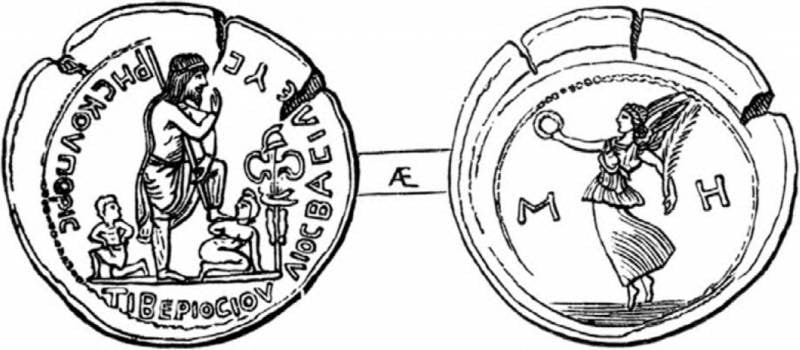
Rheskuporis I on a coin. Source: Military story and military affairs of the Cimmerian Bosporus. Yu. A. Vinogradov, V. A. Goroncharovsky
The heir of Rheskuporis - Sauromates I (93/94 - 123/124) was forced to conduct military operations on two fronts at the same time: against the Crimean Scythians, who again gathered forces for raids, and, possibly, the Sarmatian tribes in the east, who devastated Greek cities on the Taman part of the Bosporus kingdom.
In parallel with the hostilities, rapid fortification construction is recorded in the east of the kingdom. A marble slab found in Gorgippia (modern Anapa) speaks of the destruction of the defensive walls in the settlement and their subsequent complete restoration:
Simultaneously with Gorgippia, the strengthening of the fortifications of Tanais (30 km west of modern Rostov-on-Don) and the fortifications of the city of Kepa took place, which, however, did not save it from complete destruction that occurred around 109.
In general, about this period, we can say that during the first and second centuries of our era, the barbarian world of the Northern Black Sea region was in a state of constant movement. Not only Greek cities, but also the Danube provinces of the Roman Empire were subjected to a systemic onslaught from the tribes. The consequence of this process was the strengthening of borders and the buildup of military power by the countries of the region. The Bosporan kingdom, which continued its allied policy with Rome, by the end of the II century AD. e. managed to win several major military victories and once again pacify the neighboring barbarian tribes, thereby retaining (and somewhere even increasing) the territory and restoring the stagnant economy.
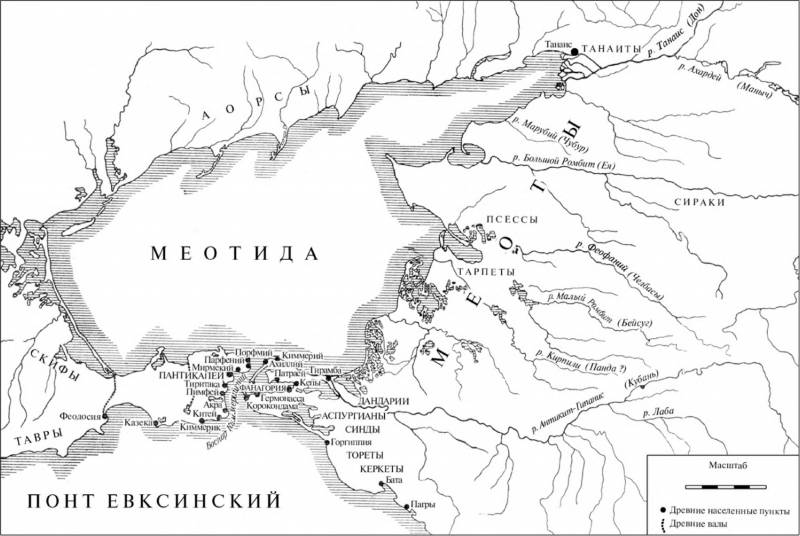
The Bosporan Kingdom in the Roman Period.
Source: Military history and military affairs of the Cimmerian Bosporus. Yu. A. Vinogradov, V. A. Goroncharovsky
However, the flywheel of the migration of huge masses of the population had already been launched and (in conjunction with the recession of the Roman economy) threatened the Bosporus kingdom with a deep crisis, which later did not take long to appear.
Beginning of the End
Since the end of the II century, the Bosporan kings, who previously regularly allocated funds to maintain the state's defense, increasingly began to shift this burden onto the inhabitants of the cities. An important reason for these economic difficulties was the change in Rome's policy towards the Bosporus kingdom, expressed in a reduction in subsidies and resource supplies necessary to maintain territories under constant barbaric pressure.
As one of the responses to the rapidly changing foreign policy situation, cases of co-rule over the Bosporus, in which two monarchs shared power between themselves, became regular in the XNUMXrd century.
By the middle of the 251rd century, the tribes of the Goths, Beruli and Borans advanced to the borders of the Northern Black Sea region. Since the borders of Rome were also subjected to a massive attack, the withdrawal of Roman troops from the lands of Taurica was fully carried out to strengthen the armies located on the Danube. The Bosporan kingdom was actually left alone with new enemies. The first victim in the beginning confrontation was the completely destroyed Gorgippia. About fifteen years later (between 254 and XNUMX), Tanais repeated her fate.
Most likely, this period hides a series of battles between the Bosporan forces and the new barbarians, the result of which, apparently, turned out to be sad. Some historians believe that the main reasons for the defeats were the unsuitability of the then existing strategic doctrine, which was not designed to repel the attacks of the enemy, which differed from the previous ones by a much larger number, weapons and other tactics of combat operations. The methods of defense, successfully applied for several centuries, turned out to be unsuitable in front of a new enemy.
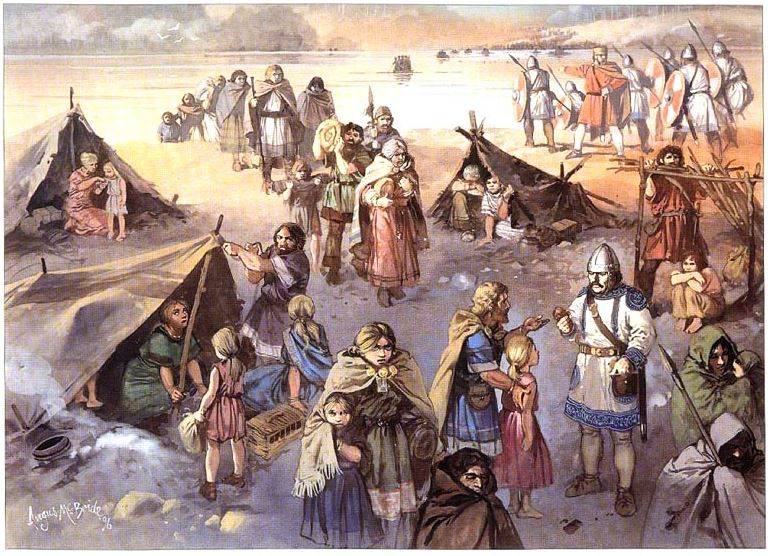
Goths move to the Danube (376) Source: "German warrior, 236-586". Ospray Publishing
During the onslaught of the Goths, the Bosporus could no longer support the interests of Rome and ensure stability on the shores of the Black Sea. The empire suffering from the blows and the Bosporan kingdom surrounded by enemies were further and further removed from each other, losing the established relationships and economic benefits. The result of these events was the division of power between the then ruling Rheskuporid IV and a certain Farsanz, whose origin is not known for certain. The new co-ruler who ascended the throne not only weakened resistance to the barbaric threat, but also provided the Bosporan fleet, ports and extensive infrastructure for pirate raids to the conquerors, who immediately seized the opportunity.
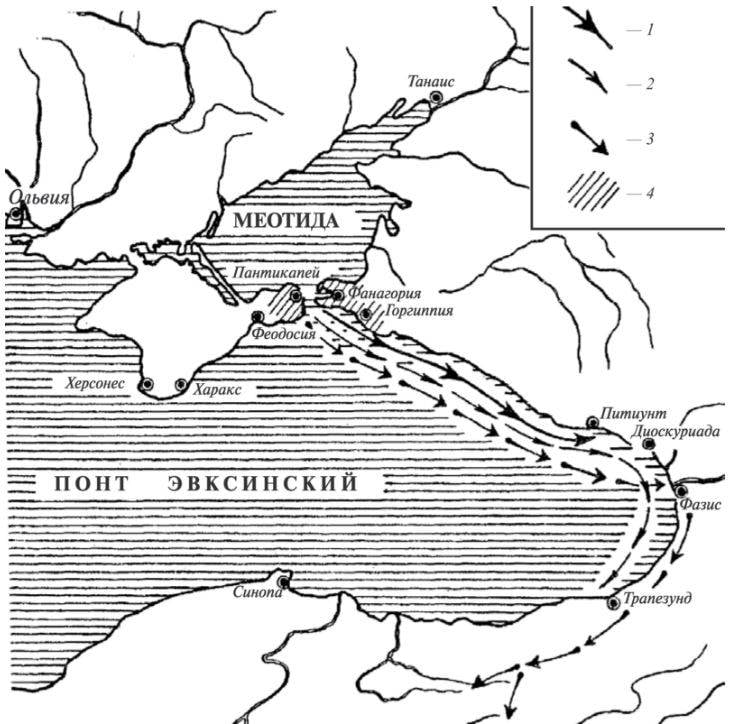
Sea voyages of barbarians. 1 - campaign 255/256; 2 - campaign of 257; 3 - raid in 275; 4 - areas of concentration of barbarians. Source: Military history and military affairs of the Cimmerian Bosporus. Yu. A. Vinogradov, V. A. Goroncharovsky
The first sea voyage from the territory of the Bosporus took place in 255/256. The Boran tribe, which acted as the main striking force in it, chose the city of Pitiunt as the first victim. This well-fortified Roman stronghold was defended by an imposing garrison under the command of the general Sukkessian. The barbarians who landed at the walls of the city on the move tried to take it by storm, but, having received a serious rebuff, they rolled back, finding themselves in an extremely difficult situation. The fact is that immediately upon arrival, confident in their own strength, they released the Bosporan ships back. Having voluntarily lost their sea communication, the Borans could only rely on themselves. Somehow, having seized the ships in the Pitiunt area, they, with great losses in the storms that played out, managed to return back to the north.
Thus, the first pirate sortie of the barbarians from the Bosporan ports was extremely unsuccessful.
The next year, the pirates went on a sea voyage again. This time, their target was the city of Phasis, famous for its temple and the riches hidden in it. However, the difficult to siege swampy terrain, high defensive walls, a double moat and several hundred defenders discouraged the attackers from repeating the sad experience of last year. Nevertheless, not wanting to return again empty-handed, the barbarians decided to take revenge in Pitiunte. By a tragic coincidence, the inhabitants of the city did not expect a second attack on their territories at all and did not prepare for defense. In addition, Sukkessian, who had fought off a barbarian raid last time, was absent from Pitiunt at that moment, conducting military operations against the Persians in the Antioch region. Taking advantage of the moment, the barbarians broke through the walls without any difficulty, having at their disposal additional ships, a harbor and rich booty.
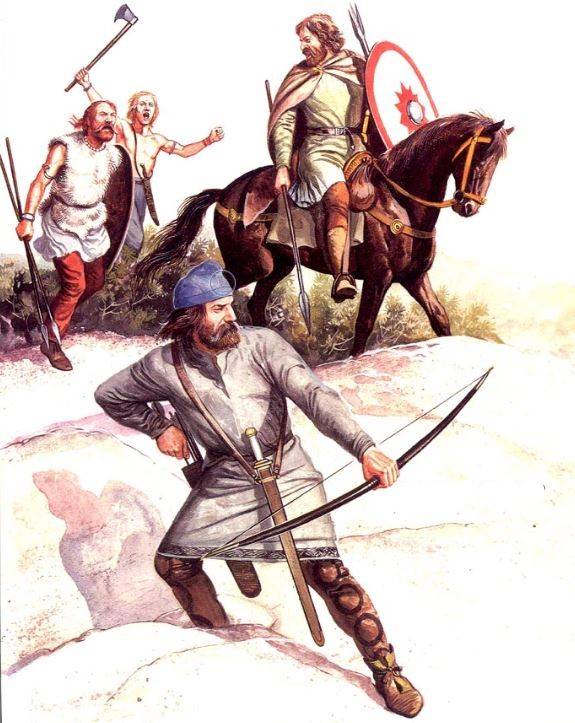
Goths. Source: Teutons and Dacians. Ospray Publishing
Inspired by the victory, the pirates renewed their forces and attacked Trebizond. Despite the impressive garrison stationed there, the morale of the defenders was extremely low. Many of them indulged in constant entertainment, often simply leaving their posts. The attackers did not fail to take advantage of this. One night, with the help of pre-cut logs with steps carved into them, they made their way into the city and opened the gates. Having poured into Trebizond, the pirates staged a real massacre in it, returning back to the ports of the Bosporus kingdom with rich booty and a large number of slaves.
Despite significant injections in its territories, the Roman Empire, which was occupied in other directions, could not quickly respond to pirate raids. This circumstance allowed the barbarians to board ships again to carry out devastating raids. Since Asia Minor was already plundered, around 275 they made a decision to cross the Bosphorus and break out into the Aegean Sea.
The raiding fleet was impressive. Some ancient authors report 500 ships. Despite the fact that these data have not been confirmed to date, it can be concluded that a really serious force set sail. Having taken Byzantium (future Constantinople, modern Istanbul) by storm, the barbarians seized the largest city of Bithynia - Cyzicus the very next day and entered the operational space. However, the devastating plans of the pirates were prevented by the Roman army, which managed to gather forces and destroy many of their ships. Finding themselves cut off from the sea, the barbarians significantly lost in maneuverability and were forced to give battle over and over again to the Roman legions pursuing them. Retreating north across the Danube, they lost most of their troops. Only the rebellion in Rome saved the pirates from the complete defeat of the pirates, which prompted the emperor Gallienus, who led the Roman army, to return to the capital and weaken the onslaught.
Apparently after the loss fleet and the shameful retreat from the territory of the empire, the barbarians decided to take revenge on the Bosporus kingdom. Many cities in the European part of the country were destroyed or plundered. Coin minting ceased for seven years.
The following years only worsened the crisis situation. The pirates' sea voyages continued. For several years, the shores of the Black, Aegean and even Mediterranean seas were attacked. Rome, at the cost of great efforts, managed to reverse the battles with the barbarians in its favor and weaken their forces, temporarily stopping the destructive raids.
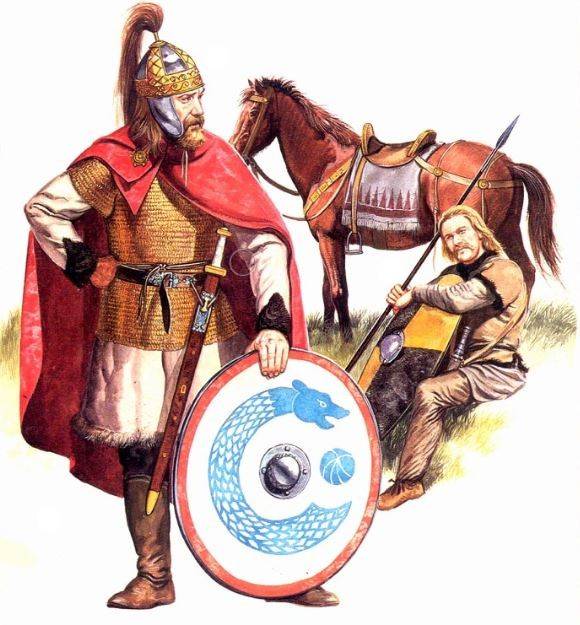
Gothic warriors (IV century). Source: Enemies of Rome Germans and Dacians. Ospray Publishing
Despite the crisis, Rheskuporis IV somehow retained power. Probably, during the destruction of the European part of the Bosporus by the barbarians, he took refuge on the territory of the Taman Peninsula. Trying to remain on the throne, Rheskuporides subsequently exercised joint reign, first with Sauromates IV, who came from some noble family that had influence in the capital of the Bosporus, and then with Tiberius Julius Teiran (275/276 - 278/279), who in during his reign, he won some kind of major victory, in honor of which a monument was erected in the capital of the Bosporus kingdom:
Some scholars believe that this military victory was aimed at restoring relations with the Roman Empire and trying to preserve the integrity of the state. Since the history of the ancient states of the Northern Black Sea region at the end of the XNUMXrd-XNUMXth centuries has been studied rather poorly, it is not possible to draw more accurate conclusions today.
In 285/286 Teiran was succeeded on the throne by a certain Fofors. It is not known how he gained power, but there is reason to believe that he was not a direct heir to the Bosporan ruling line, but, rather, was a representative of the barbarian nobility, which during this period was gaining momentum in the management of the Bosporan kingdom. Based on the fact that at the beginning of his reign the armies of barbarians, using the cities of the Northern Black Sea region as strongholds, raided the territory of Asia Minor, it can be concluded that the new ruler sharply turned from friendship with Rome to a new confrontation with the empire. This process resulted in several Bosporan-Chersonese wars, about which very little is known. However, based on the fact that for some time the Bosporus still adhered to the Roman policy, it can be concluded that Chersonesus won over the Crimean neighbor.
As a result of the past wars, the economy of the state was destroyed, but life in the east of Crimea continued. Quite indicative is the mention by the Roman historian Ammianus Marcellinus that in 362 the Bosporians came to the emperor Julian (along with other ambassadors from the northern countries) with a request to allow them to live peacefully within their land and pay tribute to the empire. This fact indicates that in the middle of the XNUMXth century, some state power was still preserved on the territory of the Bosporus Kingdom.
The collapse of the integrity of the state and submission to Constantinople
The last nail in the coffin of the Bosporus kingdom was the Hunnic invasion.
Having defeated the Alanian union of tribes, the Huns went west to the borders of the Roman Empire. The cities of the Bosporus were not seriously damaged as a result of their invasion. Since these lands did not pose a particular threat to the Huns, the invaders limited themselves only to their military and political subordination.
Massively, the Huns began to return to the Northern Black Sea region in the middle of the XNUMXth century, after the death of Attila. Some of them settled on the Taman Peninsula, while the rest settled in the Panticapaeum area, taking power in it under their own control.
However, in the first half of the XNUMXth century, apparently, in the course of some internal state changes, the Bosporus freed itself from the Hunnic influence, again beginning to strengthen ties with Byzantium. It is known about further events that the Hunnic prince Gord (or Grod), who converted to Christianity in Constantinople, was sent by the emperor to the region of Meotida (Sea of Azov) with the task of protecting the Bosporus. In addition, a Byzantine garrison was introduced into the capital of the state, consisting of a detachment of Spaniards, under the command of the tribune Dalmatia. However, as a result of a conspiracy of the Hunnic priests, Grod was killed, at the same time destroying the garrison and seizing power in the Bosporus kingdom.
These events took place around 534, which resulted in the invasion of the Byzantine expeditionary forces on the northern shores of the Black Sea and the final loss of independence by the Bosporus kingdom. The life of the millennial state ended after it was incorporated into the Byzantine Empire as one of the provinces.
Sources:
1. Yu. A. Vinogradov, V. A. Goroncharovsky "Military history of the Bosporus kingdom." Publishing house "Lomonosov", 2017
2. V. M. Zubar, A. S. Ruslyaeva "On the shores of the Cimmerian Bosporus." Publishing house "Stilos", 2004
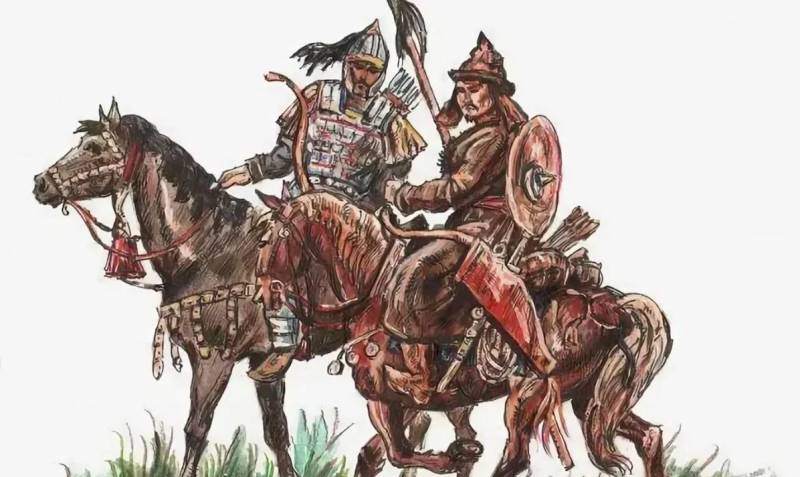
Information